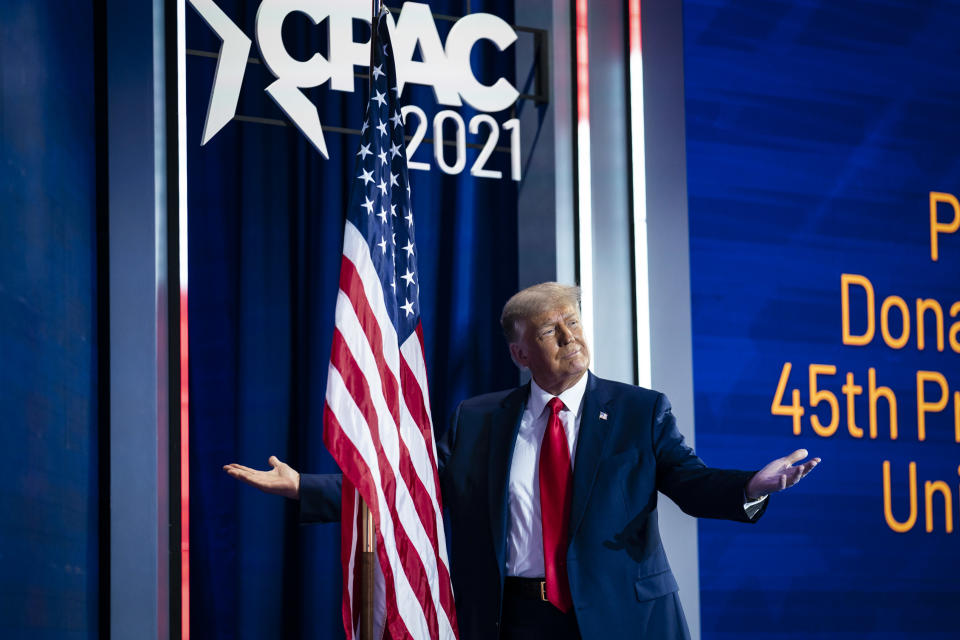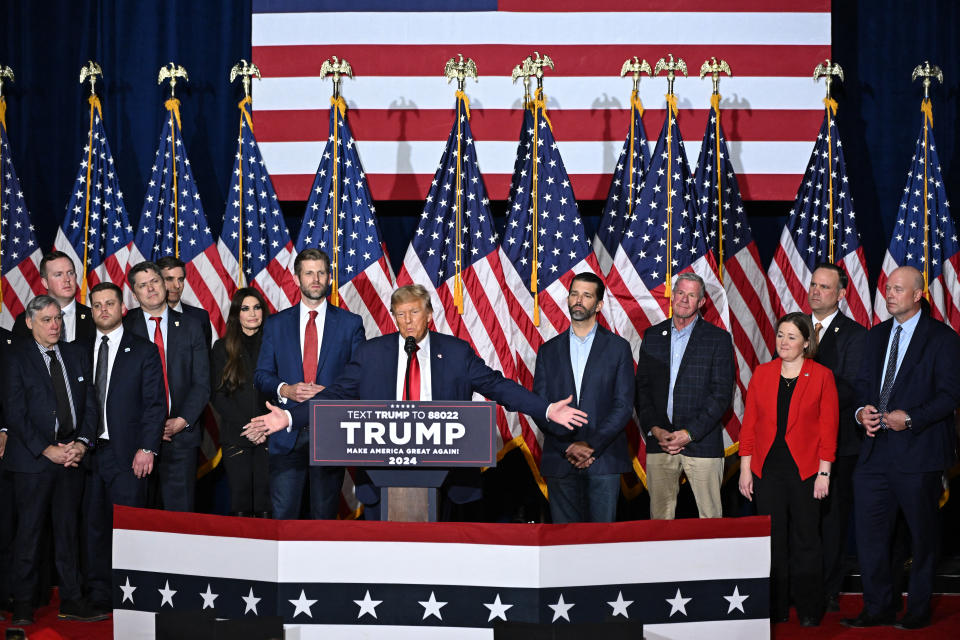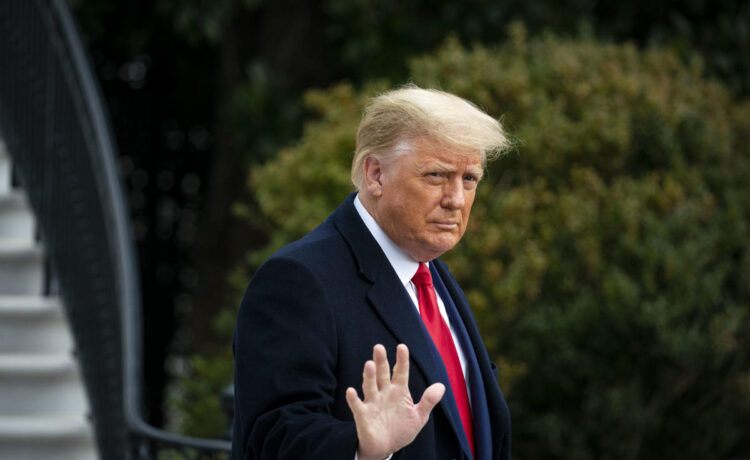Donald Trump has not been shy about discussing the stock market since he left office in 2021, with his rhetoric changing dramatically depending on Wall Street’s ups and downs.
He kept taking credit for a rally even after he departed Washington; he compared a 2022 downturn to the Great Depression; he downplayed the recovery; and he is now back to taking credit (while also predicting a crash).
There are in total at least five distinct phases of how Trump has talked about the performance of Wall Street in the 37 months since Biden succeeded him, according to a Yahoo Finance analysis of his comments.
What the analysis shows is how Trump’s comments one day can be diametrically opposed to what he said months or weeks before.
But his continued focus on this issue points to a campaign season ahead where market fluctuations may be oft-discussed, especially after President Joe Biden recently bragged on the market highs after years of avoiding the topic.
“If he’s elected,” Trump said in 2020 while pointing across the debate stage at Biden, “the stock market will crash.”
It didn’t, of course. Far from it.
Here are the ways Trump has revised and extended his remarks in the years since.
Stage 1: Taking credit as the market rose in 2021
The S&P 500 (^GSPC) closed at 3,798.91 on Jan. 19, 2021, just before Biden was sworn into office. The market would spend much of the rest of the year headed upward, with the index ending 2021 at 4,766.18, an increase of more than 25%.
With Trump’s prediction of a crash clearly not panning out, the now-former president chose instead to keep taking credit.
In a February 2021 speech — after having been out of office for over a month — Trump was still talking about “our stock market.”
“Your 401(k)s are again at record levels, higher than ever before actually,” he told a crowd at the Conservative Political Action Conference.


Trump also often claimed — in a theme that he has echoed countless times up to today — that he doesn’t get enough credit for the rebound in stock prices in late 2020 after a fall in the early stages of the COVID-19 pandemic.
“We did something amazing and the stock market was higher in the end,” he said just last month during a town hall on Fox News.
Stages 2 and 3: Blaming Biden as the market turns south and downplaying a rebound
The years 2022 and 2023 were bumpier times for markets.
The S&P 500 closed at a record high of 4,796.56 on Jan. 3, 2022. It was a high-water mark that wouldn’t be bested for over two years and Trump pivoted during that time to blaming Biden.
“We are a failing nation,” he told a crowd of Ohioans in November 2022, pointing to the lower stock market as key evidence.
“Does anybody have a 401(k)? Raise your hand if you’re happy with it,” he added before an Iowa crowd in March 2023. “I’ll tell you this, they were happy when I was running this country.”
He also stretched credulity by comparing 2022, which saw the market fall by 18%, to the crash that began in 1929 that cost stocks 90% of their value between 1929 and 1932.


The good news for investors (and Biden) was that the market soon recovered and notched gains throughout 2023. It began breaking all-time records by the end of the year.
This led to a brief — and very un-Trumplike — phase where the former president tried to downplay the stock market as an important indicator.
“The stock market is making rich people richer,” he disapprovingly told a crowd in Durham, N.H., in December soon after the Dow Jones Industrial Average (^DJI) hit a new record high and topped 37,000 for the first time.
He offered similar comments in Reno the next day and charged Biden with overseeing an economy “collapsing into a cesspool.”
Stages 4 and 5: Taking credit and predicting a crash (again)
But Trump pivoted again early this year as he began winning primary contests.
He took advantage of market highs in January that coincided with his victories in Iowa and New Hampshire.
He claimed, without evidence, that the highs were due to his wins and the increasing chances of a second Trump administration.
“As soon as it becomes clear on election night that we’ve defeated crooked Joe Biden, you will see your 401(k) soar and you already see it,” Trump told a New Hampshire crowd the day after winning the Iowa caucus. He claimed prices rise “every time we have a good poll or every time we have a night like we did last night.”
But stocks were actually down on Jan. 16, the day after Trump’s Iowa victory. That day’s trading session was focused on other issues such as bad news for Boeing (BA), which dragged the Dow Jones Industrial Average down by 230 points. The S&P 500 and tech-heavy Nasdaq (^IXIC) also saw declines that day.
Trump-linked stocks like Digital World Acquisition Corp. (DWAC), on the other hand, were up that day.


Now as Trump has settled into the role of the likely GOP nominee, his rhetoric has shifted again. Call it stage five. He’s returned to his claim that the election of Biden will result in an economic crash.
Trump’s rallies often end with the former president speaking in dramatic tones over a soaring orchestral song. A recent addition to that climactic routine has been a new mention of stocks.
“We are a nation whose stock market’s continued success is contingent upon MAGA winning the next election,” he told a crowd in New Hampshire in January as the music swelled.
The full-circle nature of Trump’s commentary was underlined a few weeks later in South Carolina when he again returned to an old favorite: the Great Depression.
“If we don’t win the next election, the stock market will crash just like it did in 1929,” he said.
Ben Werschkul is Washington correspondent for Yahoo Finance.
Click here for politics news related to business and money
Read the latest financial and business news from Yahoo Finance
















